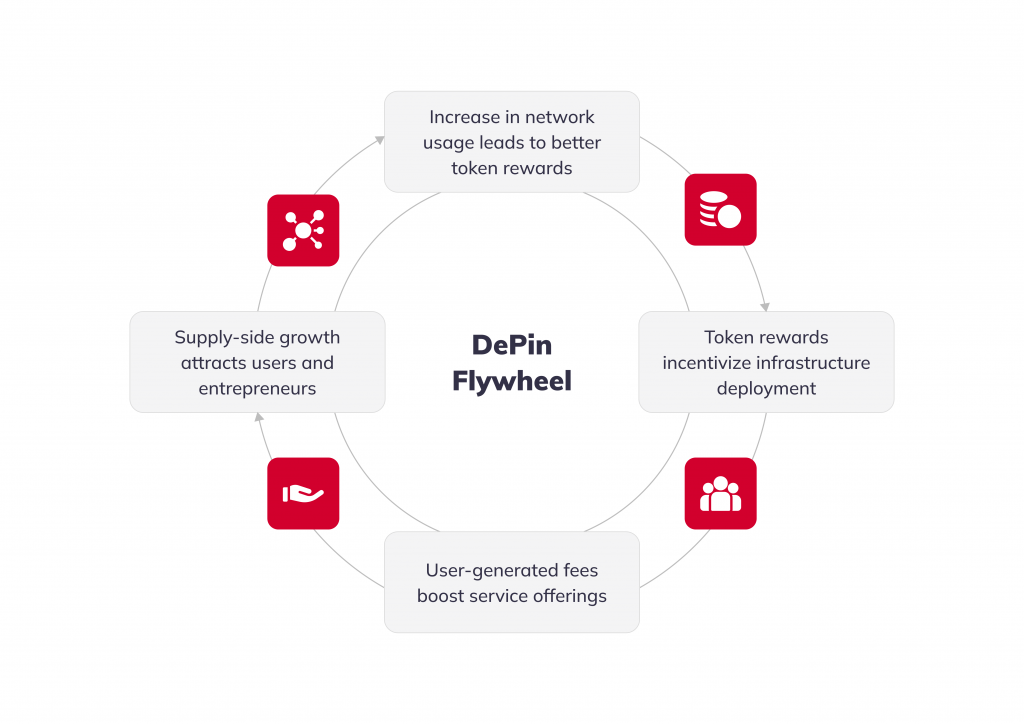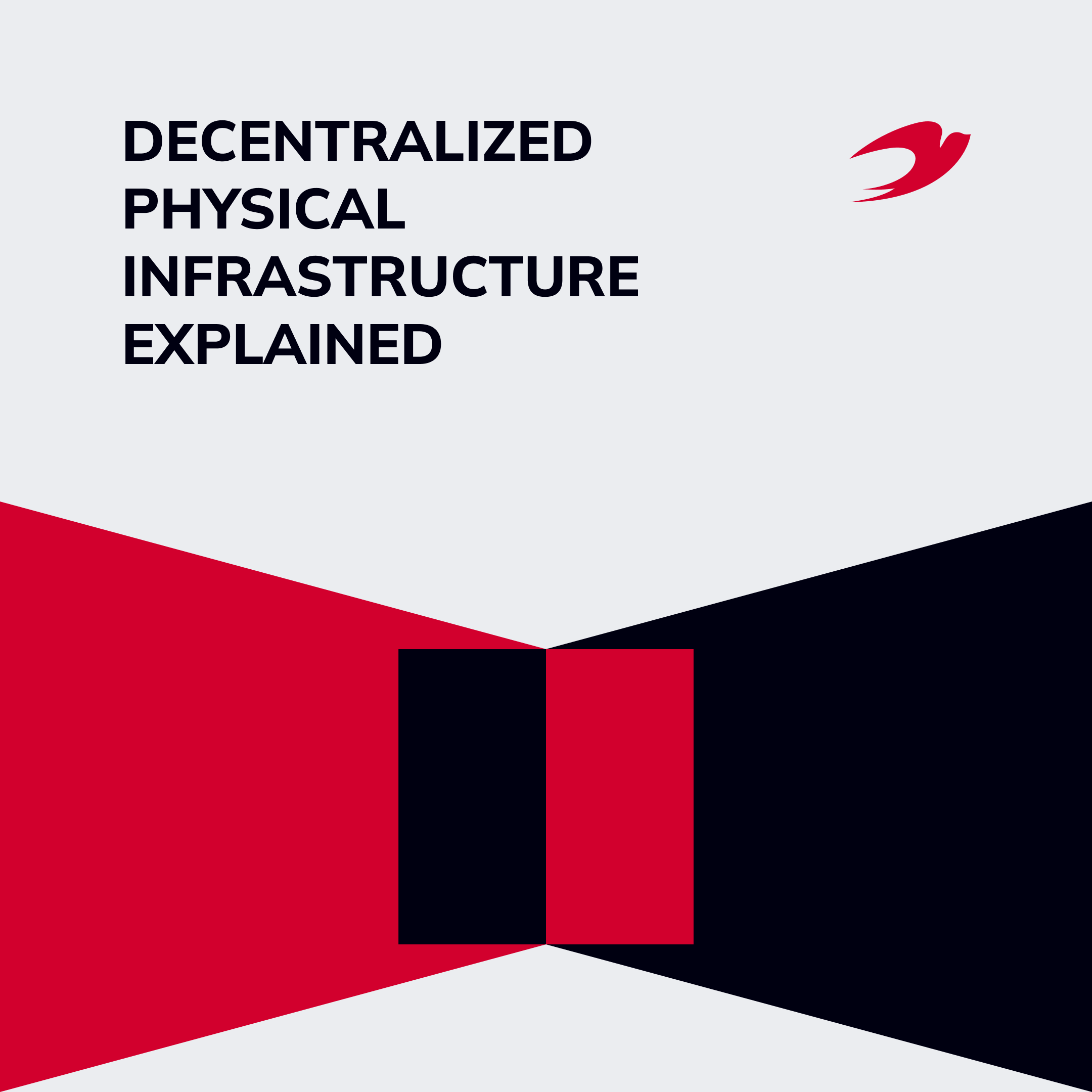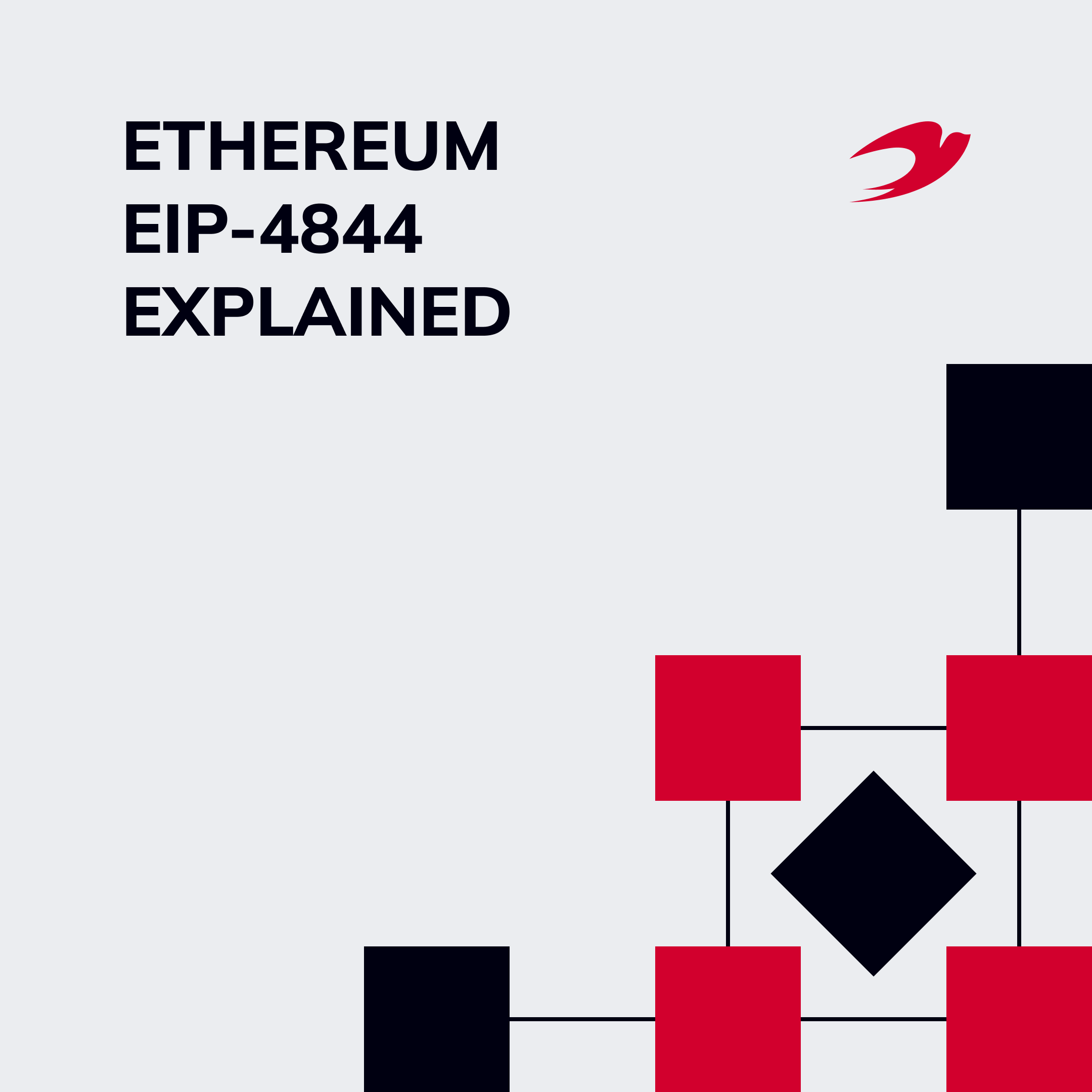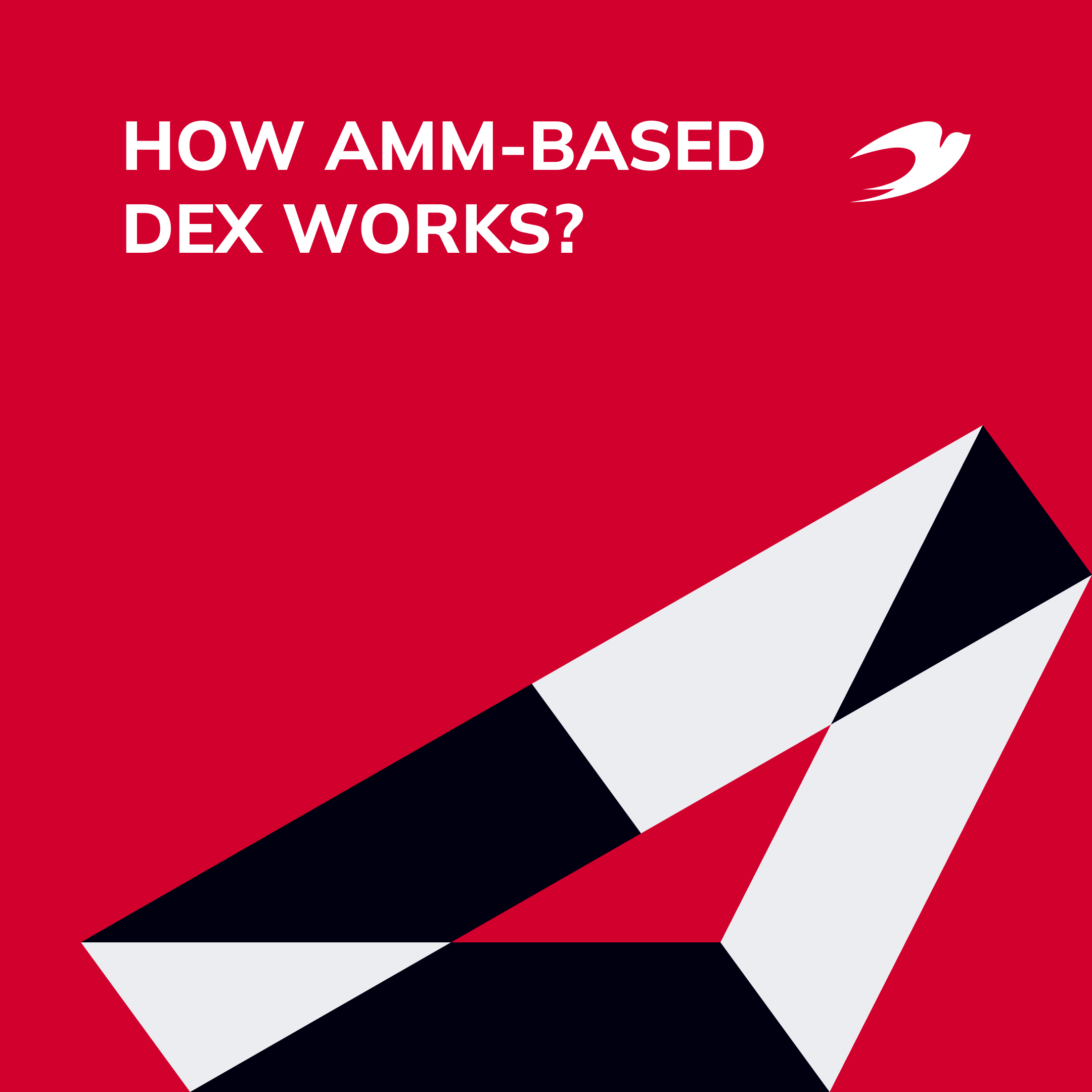A new era in crypto and DeFi is rapidly evolving. When the growing influence of blockchain technology is combined with the rapid development of globalized information technology, a whole new playing field is unveiled. This is DePIN (Decentralized Physical Infrastructure Network). The concept of DePin is now a hot topic among crypto enthusiasts, promising a revolution in decentralized physical infrastructure.
At IdeaSoft, we noticed this trend at the Breakpoint conference by Solana Foundation. There were active conversations about using this technology and how to create a blockchain application to succeed in 2024. We expect a wider adoption of the DePIN concept in the coming years, and that is why we aim to shed light on DePIN applications and the benefits of DePIN.
Table of Contents:
- Conceptual Understanding of DePIN
- Physical Resource Networks vs. Digital Resource Networks
- How DePINs Transform Web3?
- Examples of DePIN Projects
- Future DePIN Applications
- Summary
How can DePIN benefit your startup?
The main benefits of using DePIN in startups are rapid scale, neutrality with credibility, collective ownership, and frictionless payments.
Want to build a scalable technology based on the emerging DePIN concept? Our experienced team can help you with it and draw up the correct requirements for your product. Contact us to schedule a free consultation!
Conceptual Understanding of DePIN
DePINs, or Decentralized Physical Infrastructure Networks, are networks that use token incentives to motivate individuals to share their resources. This sharing of resources covers a wide range of areas, including storage, communications traffic, cloud computing, energy, etc. DePINs have transformed infrastructure provision by centralized enterprises into a form of crowdsourcing that involves users worldwide.
Why do we need DePIN? The answer to this question relates to the limitations of the current ICT (Information and Communications Technology) infrastructure. DePIN provides decentralized infrastructure and the possibility to address different limitations.
The term DePIN was first promoted and emphasized in the report of the investment research institute Messari, which also set up DePIN-related statistics.
Ethereum is known as the main chain for DePIN projects, but Solana is also starting to take the position here. The market is currently dominated by leaders such as Filecoin, Render Network, Theta Network, Arweave, and Akash Network.
How does DePIN work?
Let’s explore how DePIN works. DePIN uses a token economy model to incentivize users to provide resources, including GPU power, hotspots, storage space, etc. In the early days of DePIN, tokens often had no real value, so users engaged in a behavior similar to that of venture capitalists. They invested in bullish DePIN projects, becoming “risk miners” and reaping the benefits of increased token acquisition and token price appreciation.

Modern DePIN projects have the following goals:
- Attracting supply-side participants through tokens. Adopting a well-established token economy model attracts early participants to contribute to the network construction and provide resources. They are rewarded with tokens in return.
- Attract consumers. As resource providers grow, some developers join the ecosystem to create products. Consumers are also attracted to DePIN once the provider can offer certain services at a lower price compared to centralized infrastructures.
- Positive feedback. As the number of users increases, this demand motivates supply-side participants with higher revenues, creating a positive feedback loop. It attracts more participation from both supply and demand.
Early projects in the DePIN space focused on storage and communication technologies, such as decentralized network Helium (2013), decentralized storage Storj (2014), and Sia (2015). With the development of the Internet, Internet of Things (IoT), and Artificial Intelligence (AI), the focus of DePIN innovations has expanded to include computing, storage, communication technologies, and data collection and sharing.
Physical Resource Networks vs. Digital Resource Networks
What is a decentralized network? We have prepared a comparison table to help you understand the difference between physical resource networks vs. digital resource networks.
| Physical Resource Networks | Digital Resource Networks | |
| Accessibility | Limited by geographical constraints; physical presence is often required for maintenance and operation. | Accessible globally, allowing remote management and utilization of resources. |
| Scalability | Expanding physical networks often involves significant time and cost investment in acquiring new assets and infrastructure. | Easily scalable by adding or adjusting virtual resources, offering greater flexibility and cost-effectiveness. |
| Maintenance | Regular maintenance and repair are necessary for physical components, with potential downtime during maintenance activities. | Maintenance involves software updates and digital security measures, with minimal impact on ongoing operations. |
| Resource Duplication | Physical assets must be replicated for redundancy, leading to higher costs and resource consumption. | Digital resources can be duplicated or backed up more efficiently, reducing costs and improving resilience. |
| Cost | Initial setup costs are typically higher due to the purchase of physical assets and infrastructure. | Initial setup costs are generally lower, but ongoing operational costs may include software licenses and cloud services. |
| Flexibility | Limited flexibility in reconfiguring physical networks, often requiring significant time and investment. | Highly flexible, allowing quick adjustments to resource allocation, configuration, and adaptation to changing requirements. |
| Security | Physical security measures are crucial to protect assets, and breaches can have significant consequences. | Digital security measures, such as encryption and cybersecurity protocols, are essential to safeguard data and systems. |
| Lifespan | Physical assets have a finite lifespan and may become obsolete over time, requiring regular upgrades. | Digital resources can have a longer lifespan, with the potential for updates and upgrades to extend functionality. |
The comparison table provides a general overview, and specific cases may vary based on the industry, context, and technology advancements. If you want to develop your own innovative Web3 application, we have many articles in our blog on how to create a Web 3.0 app, or you can contact us, and we will consult you regarding your ideas.
How DePINs Transform Web3
DePIN Web3 emerges as a solution to address critical challenges within the Web3 ecosystem, particularly the bottleneck associated with centralized infrastructure. This decentralized model can reduce the strain on any single point of failure, fostering a more robust and adaptable infrastructure for decentralized applications (dApps).
DePINs play a pivotal role in facilitating the creation of applications that require physical infrastructure support. These applications often demand significant computing power, storage, and bandwidth. DePINs provide a decentralized network of resources that developers can tap into, offering improved resource availability.
Furthermore, the global accessibility of Web3 stands to benefit from DePINs. In regions with limited access to traditional centralized infrastructure, these decentralized systems allow the widespread adoption of innovative technologies. DePINs contribute to a more globally accessible Web3, empowering users worldwide to engage with and leverage decentralized technologies.
Examples of DePIN Projects
Here are 4 prime examples of DePIN crypto projects.
Filecoin & Arweave – The Leaders in Decentralized Storage
Filecoin and Arweave are redefining how data is stored. Filecoin drives distributed storage through token incentives based on the IPFS protocol, and Arweave provides a permanent storage solution. These innovations reduce the cost of storage and improve data security and reliability.
Helium – Leading the Way in Decentralized Wireless Networking
Helium is a pioneer in decentralized wireless networks, engaging users to build the Internet of Things (IoT) through token incentives. With significant progress in the IoT space and challenges in the 5G and WiFi markets, Helium’s success lies in its effective use of decentralized technology to solve the problem of high IoT infrastructure costs.
Render Network – The Rising Star of Decentralized Computing
The Render Network, a decentralized GPU rendering platform, provides a new image and animation rendering solution. The network effectively matches GPU supply and demand through a multi-tiered pricing strategy while facilitating the reuse of idle GPU resources, providing customers with a more affordable rendering option.
Theta Network – The Innovator of Decentralized Streaming Media
Theta Network leverages decentralized technology to optimize content delivery, lowering the cost and increasing the efficiency of image delivery. Theta Network features users contributing bandwidth and computing power as part of the video delivery, providing users with a better video viewing experience.
Future DePIN Applications
The development of the DePIN domain has revealed many advantages, such as increasing resource efficiency, reducing costs, and increasing market transparency. At the same time, it also faces technical, market, and regulatory challenges. These challenges include improving the user experience, maintaining competitive advantage, and complying with regulatory compliance.
The future of the DePIN space is full of opportunities and challenges. With technological advances and increased market awareness, these innovations are expected to address current challenges and revolutionize data storage, computing, and image delivery. Looking ahead, DePIN has the potential to become a key infrastructure to support the digital economy, bringing real value to society, businesses, and individuals.
DePIN use cases are diverse, from WiFi to data storage and transportation. A great example is the global map of the Helium (IoT) network, which is updated every 30 minutes. It shows extensive use.
With DePIN, people can use WiFi, transportation services, storage, IoT infrastructure, data, maps, and so on while earning rewards. This is not just about trend growth but also about driving mass crypto adoption. This trend promises a major transformation in how we interact with technology and infrastructure daily.
DePIN is an exciting model for incentivizing the real sector through blockchain technology. The network supports physical infrastructure development through a profit and rewards distribution model. Physical infrastructure can include Wi-Fi stations, surveillance cameras, servers, etc.
Several projects are working on these initiatives, starting from Helium and ending with well-known projects like Filecoin and IPFS. However, the market is still in its early stages, as mass adoption is expected to occur when major players in physical ecosystems, such as Nokia, Ericsson, or Huawei, take an interest in this direction.
Anna Datsenko, COO at IdeaSoft
Summary
Now, you know what is DePIN. It is not just a trend in the crypto world but a step forward in integrating blockchain into our daily lives. With its potential yet to be fully tapped, the future of DePIN looks bright, opening up new opportunities in the crypto world.
DePIN is not something new in the crypto market. At IdeaSoft, we possess vast experience working with such projects and are glad that trends are returning. If you want to implement the DePIN technology, we are ready to help you with this venture!




